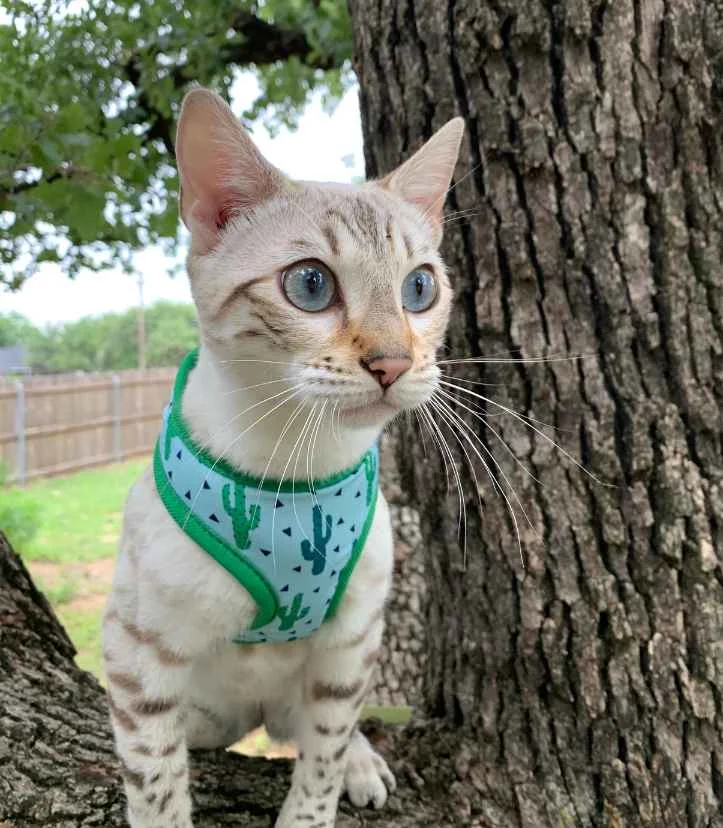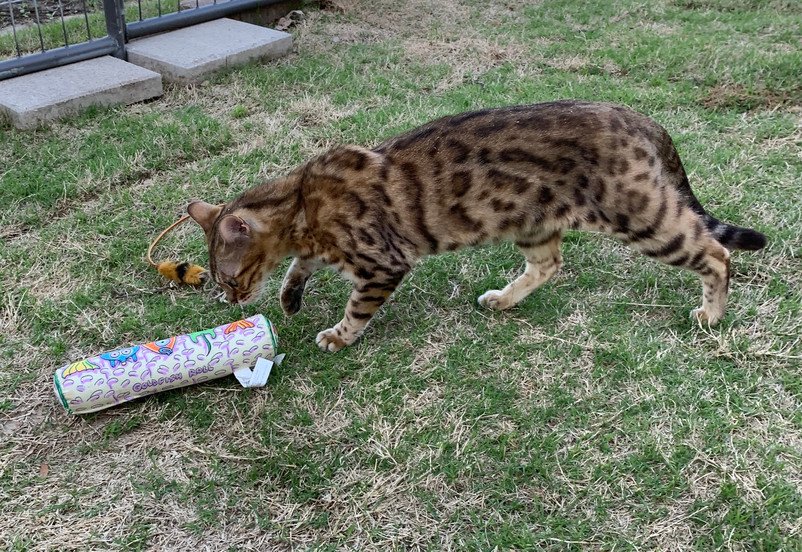Bringing Your Kitten Home
What to Bring when you pick up your kitten
~ Cat Carrier with small blanket or towel
~ Final Payment Balance – cash
(unless previously paid by email money transfer)
What we Send Home
~ TICA registration paper – Blue Slip
~ Health records (vaccinations & spay/neuter papers)
~ Microchip Form (don’t worry, this is fully paid for)
~ Contract
~ Food Sample (raw food)
~ Toys!
~ Your kitten !!
Bringing your new kitten home!
With that being said, kittens are still babies so they do need some alone time to sleep and recharge their batteries just like us.
New kittens will often cry for the ride home and during the first week. They are calling to see if anyone they know is around for company. They will settle in and the crying will turn to conversation to their new family 🙂

Introduction to the home with other Pets
Step 1 – If you have other pets in the home, introduction will be a bit slower. Going slow is the key to success! Once your kitten has adjusted to their room in your home, you can start swapping blankets that smell like the other animals in your home, and do the same with one that smells like your kitten to help your other pets adjust. Watch the reaction of all animals involved, and once they seem to be fine with the scents, you can move on to the next step.
Step 2 – Now you can start letting your kitten explore your home a bit, but all other animals must be outside, or locked in another room while the kitten is out exploring. Start with short sessions, and lengthen over time. Allow your kitten to go at their own pace, although you can encourage exploration with a toy. This step allows the kitten to become familiar with your home without the stress of dealing with other pets. The kitten will be able to smell your other pets on furniture and cat trees, and later, your pets will smell the kittens scent on things as well. During this step you will need to watch your kitten for signs that he may need to go to the bathroom. Watch for scratching, especially in corners, and squatting. If you see these signs, put your kitten in the litter box. If he jumps out immediately but you think he needs to go, put him back in his room for a bit. Sometimes they are just so excited about exploring that they wait until the last second to go potty, and then can’t find a litter box. Step 2 & 3 can be done at the same time.
Step 3 – If you previously had more than one animal in the home, you will want to do this step for each one individually so as not to overwhelm the kitten. Place the kitten in a crate and allow one pet access to sniff the kitten in the crate. Just do a few minutes at a time so you don’t stress out either animal. You can swap out who is in the crate. Continue with this step until there is no negative behavior (hissing, growling). If there is just some very minor hissing after a few attempts, you can try moving on to step 4.
Step 4 – It’s time to let them go face to face! Always watch their interactions closely for this step, as it can go bad quickly. A bit of swatting is normal, and hissing is okay too. If there is a lot of growling though, you may want to go back to Step 3. And if there is any major aggression, definitely go back to Step 3. It can take several weeks before your pets will tolerate each other, and even longer to become friends. Redirection with toys can also help make it a more pleasant experience for them, and helps them forget they are unhappy about their new “friend”.
Please Note: If your other pets include a dog, ensure the kitten has a way to explore where the dog does not have access. The kitten will need to easily be able to get to their litter box without worry that the dog could get them. Using baby gates to keep your dog in certain areas works very well. Our kittens are all socialized with our dog, so they are familiar with them. However, it may still take time to adjust to your dog. And if your dog has never been around a cat, you will need to be extra watchful, and never leave them alone together until you are 100% certain there is no threat to the kitten.
Other health issues are PK Deficiency (a type of anemia), and PRA (Progressive Retinal Atrophy) which can cause early blindness. Our cats are all tested for both of these health problems and cannot produce kittens that are positive for these diseases. We may have the occasional female that is a carrier of one disease (N/K), however we always ensure that all of our studs are negative so that they cannot produce kittens with the disease. Being a carrier does not affect the kittens health in any way.
Feeding

How much?
When you bring your kitten home they will likely be eating about a heaping teaspoon of raw food twice a day. If your kitten devours the food quickly, offer them more. You never want to limit your kittens food intake during their first year. They are growing and will typically only eat what they need. As your kitten grows, you will need to increase the amount of food you offer. It may get to a point where you think they are eating an insane amount of food, but we have seen young boys eat up to a pound of food in a day. Don’t worry, they will slow down! Most of our adults eat about 1/3 – 1/2 lb per day ( in two feedings)
What kind?
We always recommend a good quality balanced raw diet, as that is the best thing for cats (more info below). Offering different proteins is always a good idea as well. They get different vitamins from each protein. By feeding a variety it also helps prevent them from becoming picky. Sometimes cats can develop allergies to certain proteins, and if they have only ever been fed one kind, it may be difficult to get them to eat something else.
Obligate Carnivore
Cats are considered obligate carnivores and therefore should be eating an exclusively meat/organ/bone diet with only a VERY small amount of added fiber. In the wild they would get this partially digested fiber from the stomachs of the mice they eat. Here is some great information on what it means to be an Obligate Carnivore. Here is another link to a great site with info on feeding raw.
Available
Bengal Cats
For more info email us at marla@lonestarbengals.com to request my questionnaire to learn more about each other before approval
